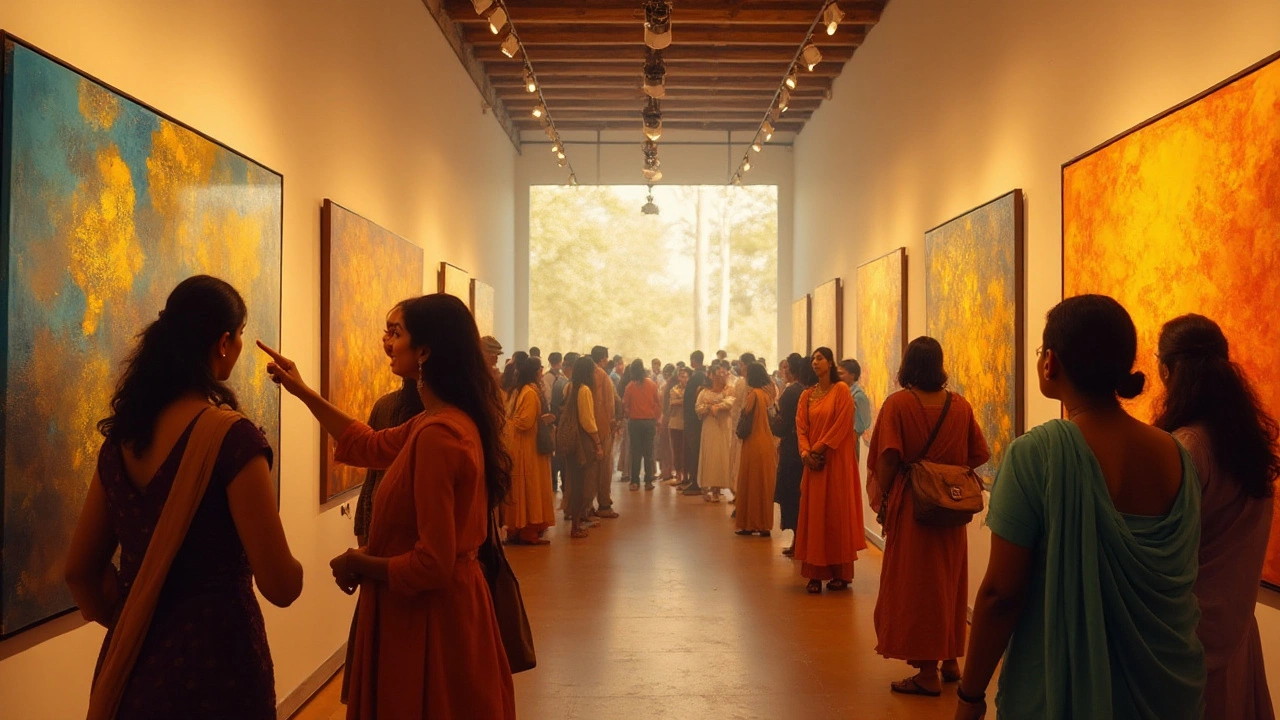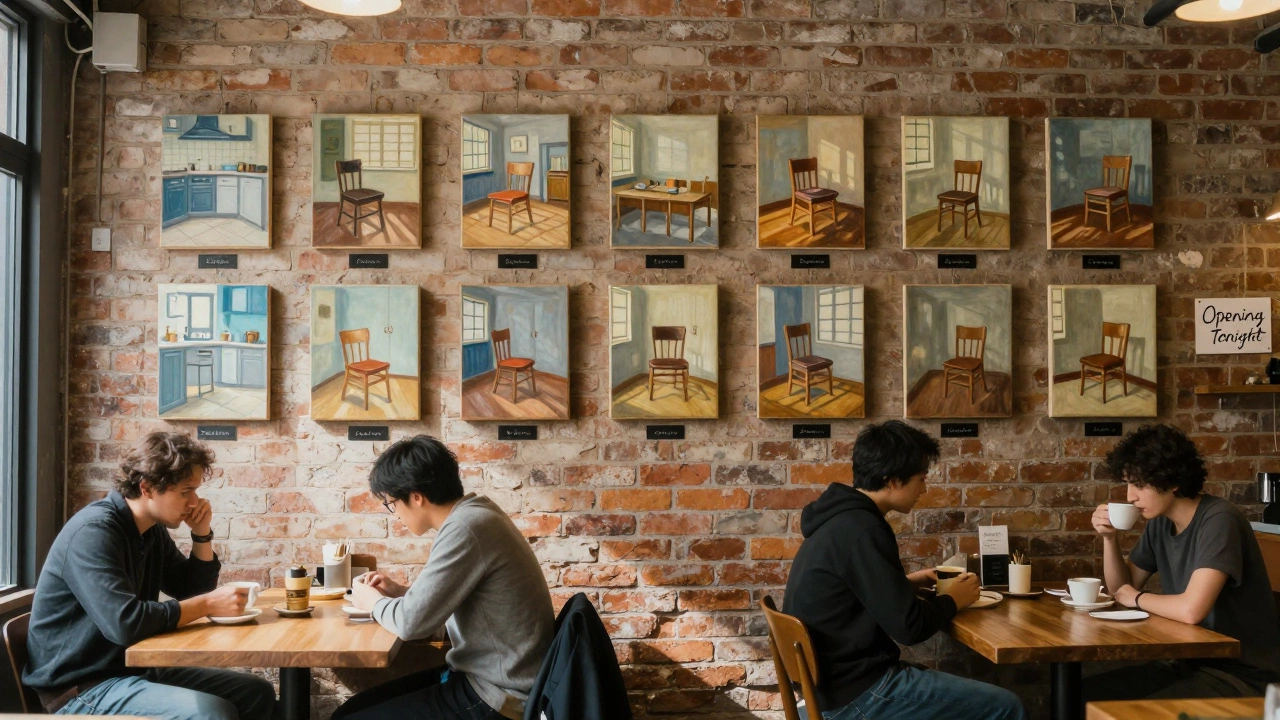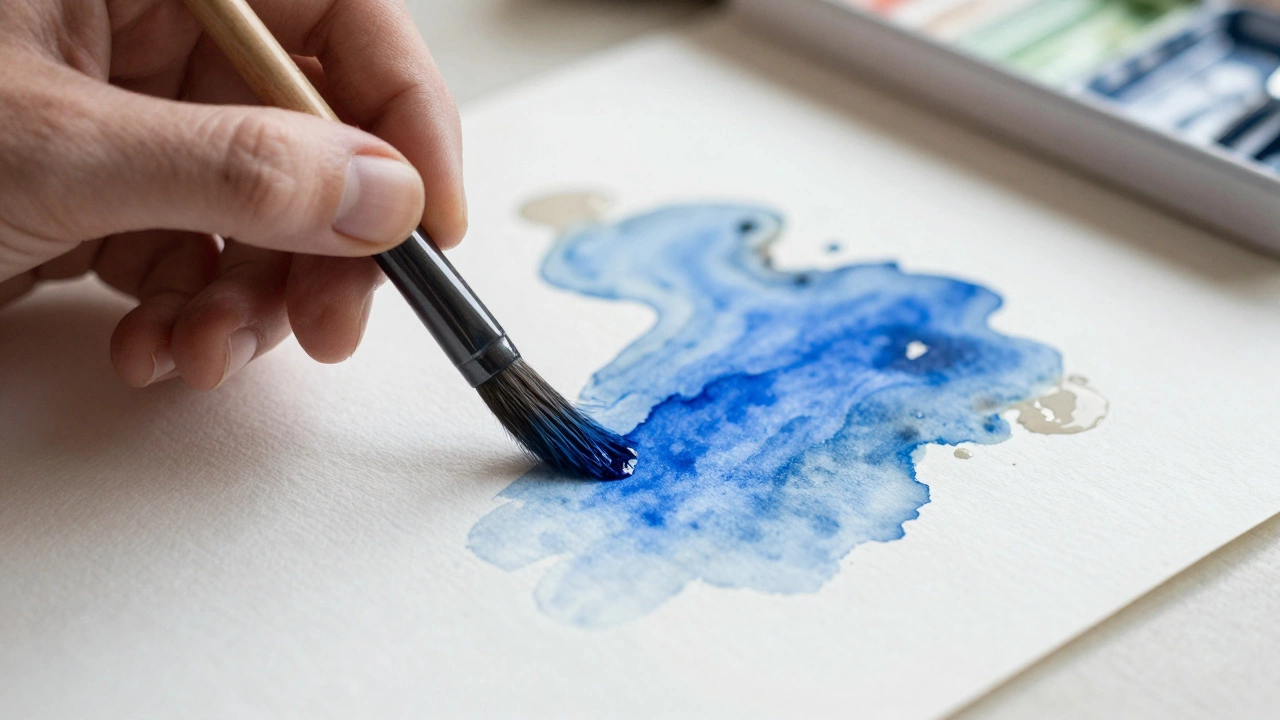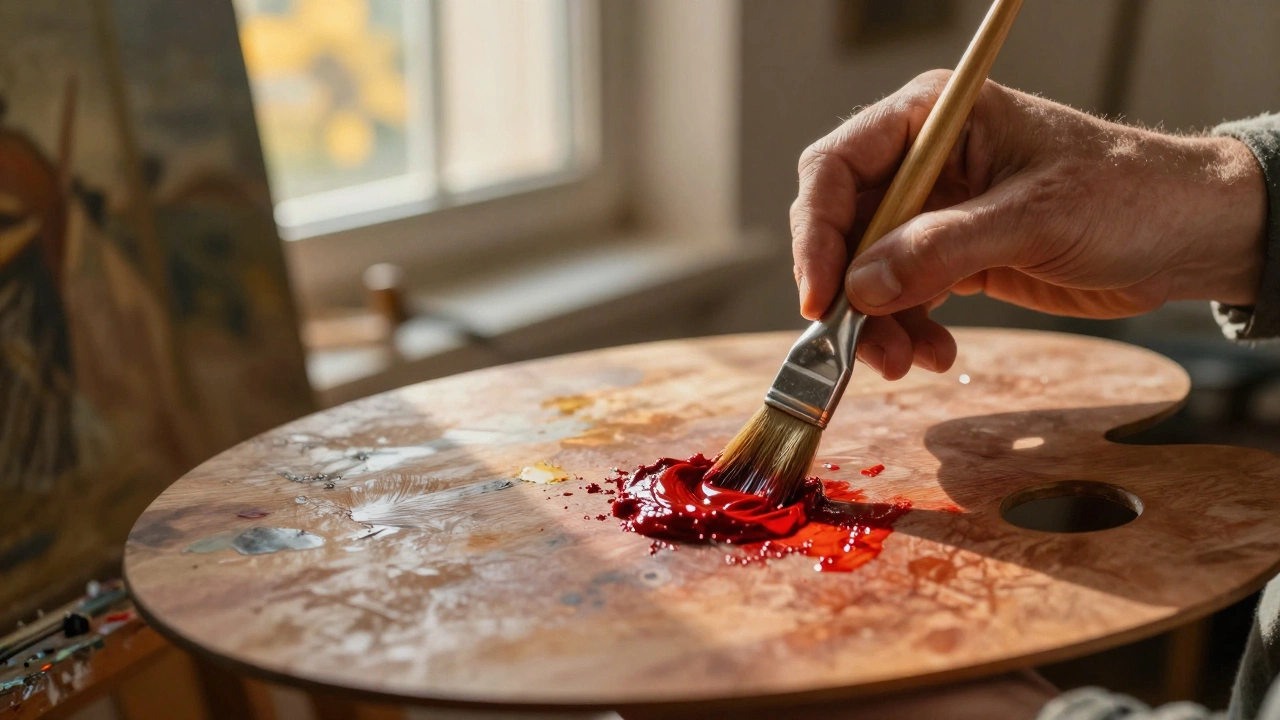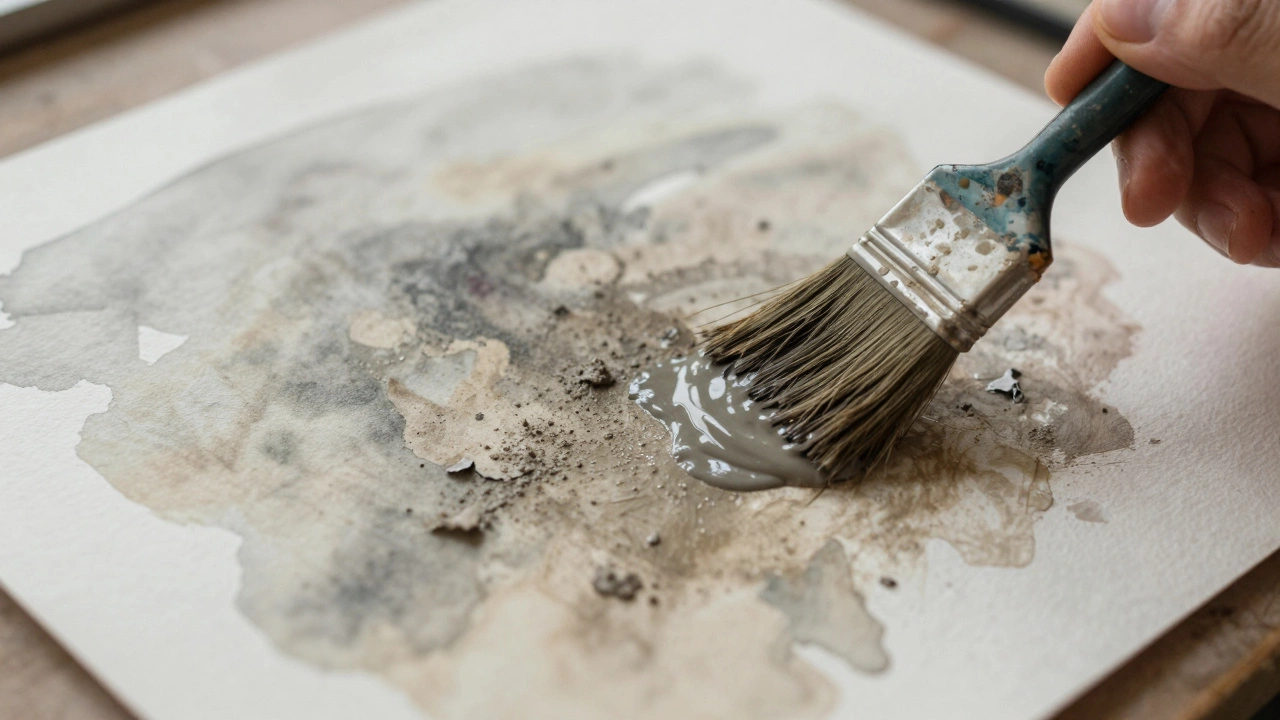Abstract art often presents a world beyond the visible, challenging viewers to explore new forms of visual language. It can be a mesmerizing mix of colors, shapes, and textures where the essence of reality is left to interpretation. For many, the first encounter with abstract art might feel perplexing, as it invites more questions than it answers.
In this guide, the journey begins with understanding the nature of abstract artistry and learning to embrace uncertainties it brings. We'll share practical tips to view such artworks with a fresh perspective, free from ingrained biases. While abstract art may seem bewildering at first, it's an opportunity to connect with one's emotional landscape, discover the subtle techniques artists use, and, ultimately, to forge a personal connection that reflects individual perspective.
- The Nature of Abstract Art
- Getting Comfortable with Uncertainty
- Approaching Abstract Art without Prejudices
- Engaging with the Art Emotionally
- Interpreting Visual Elements and Techniques
- Finding Personal Meaning and Connection
The Nature of Abstract Art
Abstract art is a phenomenon that continues to captivate, confound, and converge on new ideas in the art world. It emerged in the early 20th century as a radical shift from realistic representation, driven by artists who were eager to express emotions and ideas through subjective, non-representational forms. This kind of art challenges traditional notions of perspective and composition, and instead offers freedom for visual improvisation. The most intoxicating aspect of abstract art is its ability to transcend literal interpretation, prompting viewers to engage directly with color, form, and texture. It liberates both the artist and the viewer from the confines of reality, offering a canvas where imagination reigns. Abstract art holds a mirror up to one’s perceptions, encouraging spontaneous and intuitive responses. It provides a framework where viewers can explore their personal emotions without the need for clear visual cues. As art critic Clement Greenberg once remarked, this art form is "like music for the eyes," resonating on deeper layers of human consciousness.
Many renowned artists have contributed significantly to this genre, each with their unique take on abstraction. Wassily Kandinsky, often hailed as the pioneer of abstract painting, believed that abstract art could convey profound spiritual truths. He viewed each piece as an orchestra of color and form, which could evoke the soul’s inner emotions. In another approach, Piet Mondrian's works emphasized purity and formality through his use of grids and primary colors, stripping art down to its essence. These artists, among others, were paramount in shaping the development and perception of abstract art as an influential component of modern art. Despite its non-representational nature, abstract art often reflects the socio-political contexts of its creation. For instance, during times of chaos and upheaval, the bold, erratic strokes in some paintings mirror the discord of the outside world. These pieces invite viewers to ponder the historical circumstances and the emotional states they encapsulate, making the art form deeply reflective and often profoundly insightful.
Understanding the nature of abstract art starts with appreciating the intent behind it. Unlike artworks that depict a faithful representation of their subject matter, abstract art doesn't aim to imitate or replicate the visible world. Instead, it lets the artist explore reality through a lens ungoverned by physical boundaries. This creative freedom leads to diverse expressions ranging from the chaotic and turbulent to the serene and minimalist. It thrives on ambiguity, providing a playground for both the mind and the spirit. Those encountering abstract art for the first time might wonder how to make sense of a scene with no clear figures or objects. The secret lies in submerging oneself in the painting's energy, allowing the viewer's mind to wander, discover, and ultimately find personal meaning within the abstract.
While it may seem daunting at first, approaching abstract art with an open mind and a curious heart can lead to a richer understanding of both the art and oneself. Whether through the vibrant swirls of Jackson Pollock's action paintings or the serene balance seen in Mark Rothko's color fields, each work invites viewers into a dialogue without words. This silent conversation can often be more revealing than any literal representation, urging individuals to decode their emotional responses and identify how these resonate with personal experiences. In this way, abstract art not only reflects the artist's vision but also taps into a universal language understood by the heart and imagination.
Getting Comfortable with Uncertainty
Delving into abstract art is akin to wandering through a labyrinth designed not for entrapment but exploration. It's natural to feel a touch daunted when first facing a canvas that swirls beyond the bounds of realism. While our early experiences with art often involve clearly depicted subjects, abstract art shifts this paradigm, inviting us to embrace the unknown. Adjusting to this can be as much a personal growth journey as it is an art appreciation endeavor. A good starting point is to relinquish the desire to 'figure out' the art.
Indeed, one of the most freeing realizations is to accept that there might not be a singular meaning. Abstract works often reflect the artist's emotional state or a concept rather than a replicable reality. This opens windows to various interpretations, each as valid as the next, based on individual perception. As you stand before a piece of abstract art, let go of the urge to resolve it neatly. Instead, indulge in the array of possibilities it presents, much like considering multiple hypotheses in a scientific exploration.
To truly engage with the uncertainty that abstract art presents, view each piece as a dialogue between the canvas and your mind. This dialogic encounter isn't prescriptive; rather, it mirrors life's inherent ambiguities and complexities. And with each successive viewing, how you perceive the artwork might change — shaped by new experiences, moods, or reflections. This dynamism keeps the relationship with art alive and ever-evolving.
A quote from Wassily Kandinsky, often hailed as a pioneer of abstract art, captures this essence perfectly: "There is no must in art because art is free." This freedom defies the constraints of conventional forms, but in that very defiance lies its magic.
Structured approaches can also aid in engaging with uncertainty. Consider creating a personal routine when observing abstract art: take a moment for an initial visceral reaction, then pause, allowing your eyes to meander across the canvas, noticing shapes, hues, and forms. Reflect on any emotions or memories these visuals evoke. This approach doesn't intend to pin down meanings but to develop an appreciation for the artwork's capacity to stimulate varied responses.
As patrons of visual arts, embracing this uncertainty is a skill in itself. It is a celebrated aspect of the human journey through art, mirroring our overarching quest for understanding. The more comfortable we become with the unknown, the richer our engagement with abstract art becomes, fostering a deeper appreciation for this challenging yet rewarding form of art interpretation.
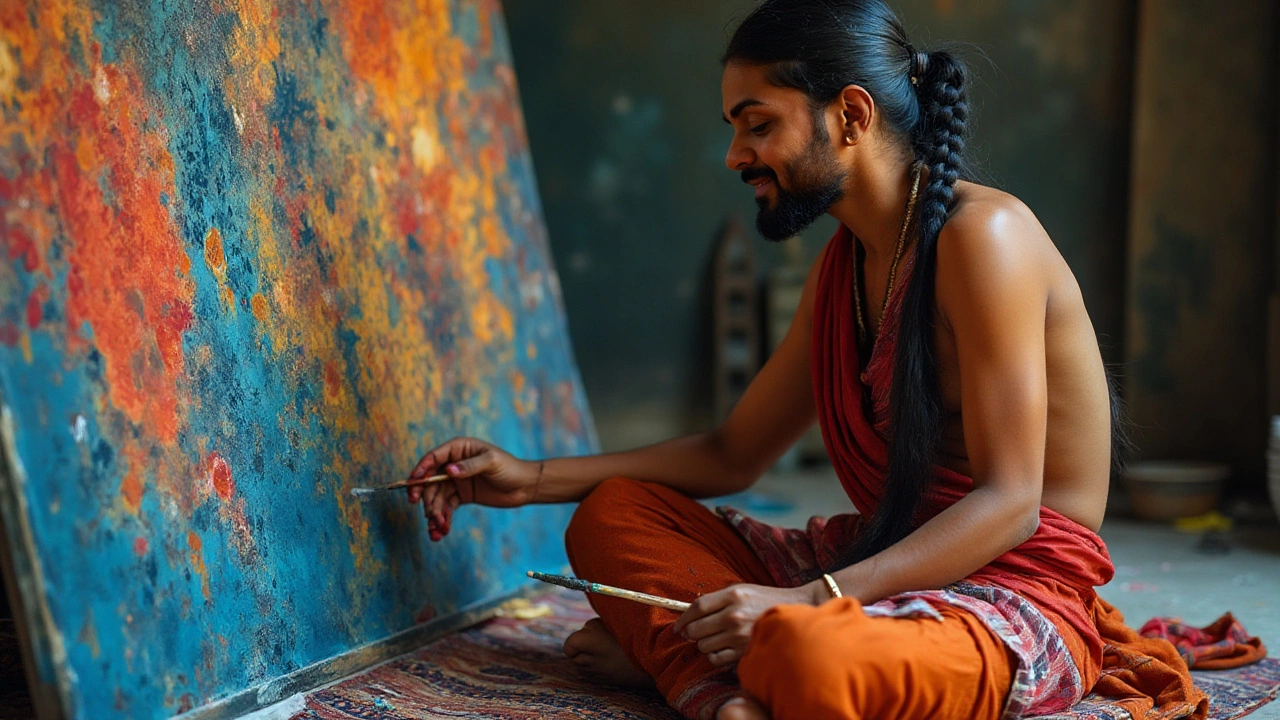
Approaching Abstract Art without Prejudices
When it comes to abstract art, a common hurdle for many is the struggle to set aside preconceived notions. It's easy to fall into the trap of expecting art to directly reflect the physical world as we see it. Yet, abstract art does something quite different. It captures the essence of experience, feeling, and idea rather than mimicking reality. This pivot in perspective requires a conscious decision to let go of biases that may stem from traditional art forms or cultural expectations. It necessitates approaching the canvas with an open, exploratory mindset. Moving past prejudices means allowing yourself to appreciate abstract art for its unique visual language and the emotions it evokes without the need for concrete explanations.
Understanding the intention behind abstract pieces can aid in dismantling biases. Many artists are driven not by the desire to reproduce visible reality, but by the need to delve deep into the subconscious or express elements that cannot be easily put into words. For instance, take Wassily Kandinsky, who believed in the spiritual resonance of colors and forms. He once said, "Color is a means of exerting direct influence upon the soul."
By viewing art through Kandinsky's lens, one can begin to see each brush stroke and hue not as a random act but as an intentional spiritual communication.This abstraction from reality is not an absence of skill or depth; rather, it is a profound expression of the artist's personal and cultural context.
Another useful approach to shedding prejudices is immersing oneself in the historical and thematic backdrop of abstract movements. The birth of abstract art in the early 20th century coincided with a dramatic shift in the world—politically, socially, and technologically. The abstraction reflected society's break from tradition and the exploration of new philosophies. Understanding these contexts can significantly enhance appreciation by revealing the artists' statements about their perceptions and their time. Consider the chaotic compositions of Abstract Expressionism, born in post-war America, embodying the intense emotions of an era plagued by uncertainty. Such context allows viewers to detach from biases based solely on aesthetics.
Engagement without judgment aligns with viewing art as a dialogue rather than a monologue. Allow the piece to speak to you; ask what it evokes, not tells. A helpful practice is to stand in front of an abstract work, take deep breaths, and turn off the inner critic. Let your eyes wander across the composition, and focus on how each element makes you feel. React to the raw energy, or calmness, that emanates. Whether it reminds you of chaos or tranquility doesn’t matter. Each experience is valid. To support your journey, here are some practical steps to rid yourself of prejudices:
- Before viewing, research the artist's background and artistic intention.
- Note your initial thoughts and feelings, but then delve deeper into why they surface.
- Compare various abstract works to understand the diversity in styles and intentions.
- Reflect on personal emotions provoked by the artwork and consider how they shape your interpretation.
Approaching abstract art without prejudice is a liberating experience. It invites you into a new world where imagination reigns, and interpretation is limitless. By embracing this freedom, not only do you open yourself up to a richer art-viewing experience, you also cultivate a deeper understanding of the diverse tapestries of human expression.
Engaging with the Art Emotionally
Engaging emotionally with abstract art requires one to look beyond the surface and connect with the deeper sentiments it evokes. While abstract pieces might initially perplex the observer due to their unconventional forms and unexpected color combinations, they provide a unique opportunity to delve into one's own emotional landscape. Allowing oneself to feel without the need for logical understanding is key. When standing before an abstract work, take some time to let the colors and compositions resonate. Notice how they affect your mood or bring about certain memories. Often, a painting’s mood can shift from one moment to the next, influenced by your mindset or environment.
Art doesn’t always need to be understood in the traditional sense; it needs to be felt. Start by focusing on your inner reactions. Do you feel calm, anxious, joyful, or reflective? Do the swirling patterns remind you of something familiar, or do they convey a sense of novelty? Sometimes it's helpful to view abstract art like listening to music without lyrics; allow yourself to be immersed in the rhythm and flow rather than searching for specific meaning.
"Art enables us to find ourselves and lose ourselves at the same time," mused Thomas Merton. By letting go of preconceived notions of what art should be, we open ourselves to the art's current and let it take us to unexpected emotional terrains.
Of course, the emotional engagement process also involves recognizing the artist's emotional narrative behind the work. Historically, many abstract artists channel profound emotions into their creations, using bold brush strokes or soothing palettes to convey their internal world. Consider the stories of artists like Mark Rothko, whose deep, contemplative color fields aim to evoke tragedy and ecstasy. When engaging with such artwork, try to surmise the emotional intent behind each brushstroke. Is the chaos observed on the canvas reflective of internal turmoil, or does the harmony speak of peace?
If you're viewing abstract art at a museum, take a moment to reflect on other viewers' interpretations. Art is personal, and sometimes overhearing others discuss their interpretations can provide new insights or help refine your emotional response. Remember, the true beauty of abstract art lies in its ability to stimulate conversations that are as multilayered and diverse as the artworks themselves. Quoting from another visionary, Paul Klee noted, "Art does not reproduce the visible; rather, it makes visible." It's a reminder to engage with what’s before you uniquely and authentically.
Practically, enhance your emotional engagement by taking notes of the spontaneous thoughts and emotions that arise while observing abstract art. Writing those down often leads to deeper understanding and personal revelations. Also, revisiting the same piece after some time can reveal shifting perspectives. By acknowledging the change within you, abstract art begins to reveal its spectrum of possibilities.
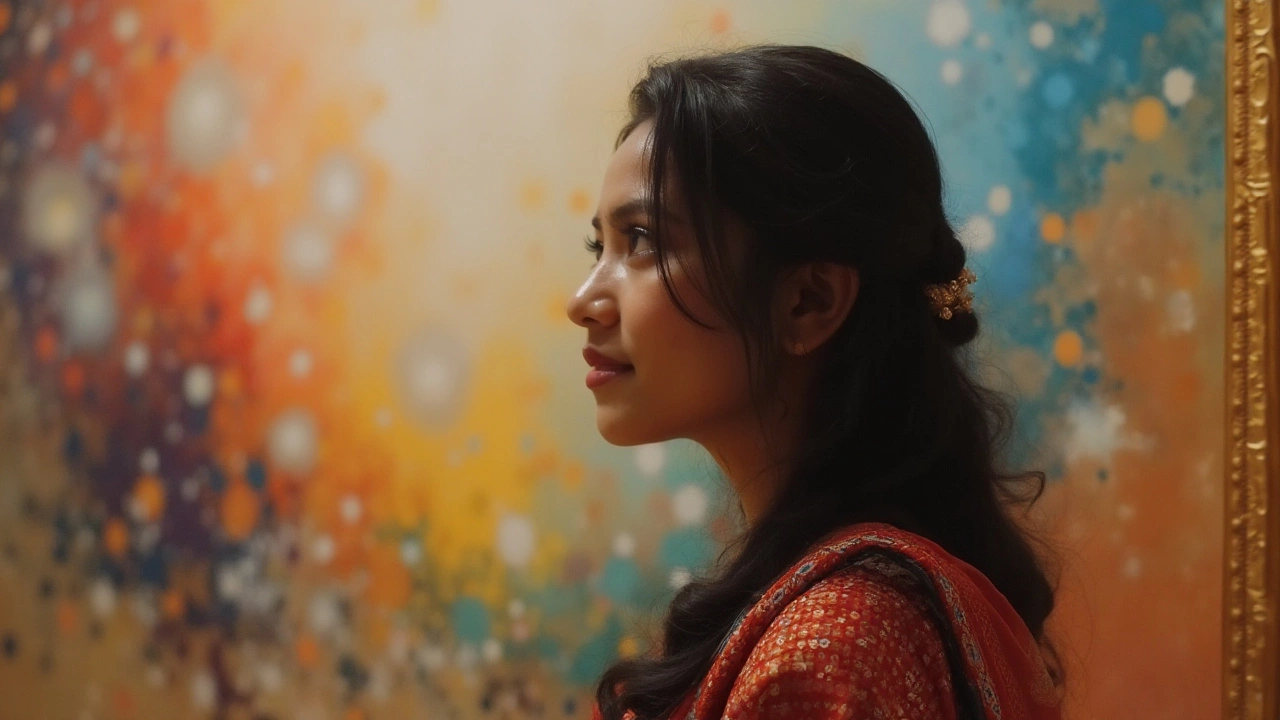
Interpreting Visual Elements and Techniques
When stepping into the domain of abstract art, understanding how to interpret its visual elements and techniques becomes both an art and science of its own. Abstract artists often play by their own rules, using forms, colors, and lines in ways that might not seem conventional to the casual observer. The key to unraveling their silent language lies in astute observation and open-mindedness. Each line and each color has been chosen deliberately, although its purpose might not be immediately clear. In some cases, the raw texture of the artwork itself becomes a language, communicating a visceral connection to the viewer. You’ll find that many abstract pieces rely on bold contrasts or harmonious blends, guiding your visual journey through each swathe and stroke.
One might start by focusing on color. Color can evoke emotions as effectively as words, if not more so. Warm colors such as reds and yellows might stir up feelings of warmth and passion, whereas cooler shades might bring tranquility or a somber note. Artists often use color not merely for beauty, but as a symbol, as seen in works of pioneers like Wassily Kandinsky, who believed in the spiritual power of hues. He once noted,
"Color is the keyboard, the eyes are the harmonies, the soul is the piano with many strings."
Shapes and lines in abstract artworks often seem to dance across the canvas, leading the eye in different directions. Consider the use of lines, for instance. They can direct where you look or create a sense of motion. Jagged, sharp lines might suggest chaos or energy, while softer, fluid lines might convey grace or calm. The interplay of these elements can be seen in works by artists such as Piet Mondrian, whose grid-like paintings explore balance and order, yet possess an intrinsic rhythm. Texture is another vital tool. It might be used to add depth or to emphasize a certain area of the piece. The tactile quality can deeply affect the interpretation, suggesting roughness or smoothness, which can have metaphorical implications about the subject being portrayed.
The techniques employed in art interpretation are as diverse as the art itself. Some artists may leave clues within the art, requiring a deep dive into the historical context or the artist’s personal life to unlock them. In contrast, some works intentionally leave the narrative open-ended, inviting you to complete the story. When exploring these artworks, consider the possibility that art interpretation can be both intuitive and analytical. To some, finding an 'answer' might not be as satisfying as the discovery process itself.
To aid visual exploration, developing a personal strategy can be helpful. This might start with asking simple yet profound questions like, “What am I feeling?” or “Where does my eye naturally go?” Allow your instinct to guide you, but let your curiosity ask why certain elements resonate more than others. As you practice this mindful approach, the vocabulary of abstract art becomes more familiar, revealing layers upon layers of insight and emotion.
Finding Personal Meaning and Connection
Discovering personal meaning in abstract art involves a journey as nuanced as the artworks themselves. Each canvas is an invitation to embark on an inner exploration, allowing viewers to reach beyond the obvious and delve into their own interpretations. Art, after all, acts as a mirror to the soul, reflecting back emotions, thoughts, and memories in myriad ways. When standing in front of an abstract piece, one method is to let yourself be guided by emotions rather than seeking a singular, concrete definition. Tap into what the art evokes within you. Does it call upon a sense of calm, discord, or nostalgia? Engaging with such visceral reactions can open pathways to deeper understanding.
To deepen this connection, recognizing and appreciating the visual elements and techniques of the artist is pivotal. Consider how the art's interpretation might change when viewed from different angles or under varying lights. It's much like reading a favorite book at different life stages; new subtleties emerge each time. This can shift your perception and connect you with the intimate dialogue between color, form, and space. Observing how colors bleed into each other or the way textures rise and fall across the canvas can narrate stories of conflict and harmony, much like the human experience. This experiential approach not only enriches your understanding but fosters an authentic rapport with the artwork.
Engaging in discussions with others can further broaden your horizon. Sharing interpretations, as diverse as the color palette of Peter Doig's nocturnal landscapes or the geometric simplicity of Kazimir Malevich’s works, can open fresh perspectives. Abstract art holds the mystery of the unknown and the familiarity of shared human emotions. It might be insightful to revisit thoughts expressed by Wassily Kandinsky, a pioneer of abstract movement, who once noted,
“Of all the arts, abstract art is most connected to the soul and the heavens.”This encapsulates how creating and viewing art can be a spiritual journey, an unending conversation between the physical and metaphysical realms.
For those still finding it challenging to connect personally with abstract masterpieces, keeping a reflective journal can be transformative. Jotting down thoughts, sensations, or even spontaneous doodles as you interact with the art can uncover hidden layers of understanding. After all, an abstract piece rarely presents a full narrative but rather offers hints and cues that lead you toward your interpretations. Analyzing art is less about arriving at a specific answer and more about embracing the experience of viewing and comprehending it in one’s own right.
Lastly, remember that discovering personal meaning in abstract art can be as distinct and changing as the movement itself. Art patrons often find that their interpretations mature over time, influenced by personal growth, shifts in contextual understanding, and changes in the cultural landscape. Much like how the bold strokes of a Gerhard Richter painting resonate differently every season, let the journey of connection remain ever-evolving. Abstract art doesn't insist on being understood in a single form or fashion; it invites open-ended engagement, allowing each viewer to author their narrative through the beauty of abstraction.
